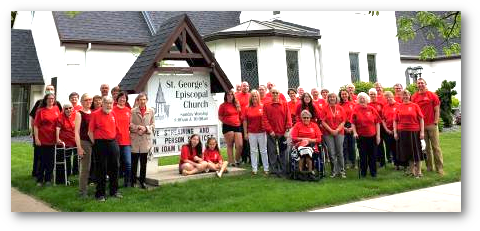Rite 1, Rite 2
The 1979 BCP provides the services of Morning and Evening Prayer, the Holy Eucharist, and the Burial Office in both traditional language and contemporary language rites. The traditional language rites are known as Rite 1, and the contemporary language rites are known as Rite 2. The BCP also presents the collects for the church year in both traditional and contemporary language. The Rite 1 liturgies reflect the language and piety of the Elizabethan era and the first BCP, although the structure of these liturgies also reflects the influence of modern liturgical scholarship. The Rite 2 liturgies reflect more fully the influence of the liturgical movement and contemporary theology. Rite 2 liturgies tend to reflect greater sensitivity for inclusive language issues. The proper liturgies for special days (such as Ash Wednesday and Palm Sunday), pastoral offices (such as the Celebration and Blessing of a Marriage), and episcopal services (such as ordinations) are printed in contemporary language in the BCP. When these services are celebrated in the context of a Rite 1 Eucharist, the contemporary idiom may be conformed to traditional language (BCP, p. 14). The Hymnal 1982 and The Hymnal 1982 Accompaniment Edition, Vol. 1, provide service music settings that are designated for Rite 1 and Rite 2 services of Morning and Evening Prayer and the Eucharist.
Although the structure of Rite 1 and Rite 2 liturgies are essentially the same, the options and requirements of the rites differ in certain respects. For example, the Rite 1 Eucharist requires the collect for purity in the entrance rite (BCP, p. 323), but the collect for purity may be omitted in Rite 2 (BCP, p. 355). The summary of the Law is optional in the Rite 1 Eucharist, but it is not included as an option in the Rite 2 Eucharist. The prayer for the whole state of Christ’s Church and the world (BCP, pp. 328-330) is presented as an option in the Rite 1 Eucharist, but this prayer is not included in the Rite 2 service. The BCP also provides six forms for the prayers of the people which may be done in traditional or contemporary language. The Rite 1 Eucharist includes two biddings to confession, the first of which dates to 1548. This bidding begins, “Ye who do truly and earnestly repent you of your sins” (BCP, p. 330). It is not found in the Rite 2 Eucharist. The Rite 1 Eucharist allows one or more of four sentences of scripture to be said after the confession and absolution. These sentences, previously known as the “comfortable words,” do not appear in the Rite 2 Eucharist. The Agnus Dei and the prayer of humble access may be said after the breaking of the bread in the Rite 1 Eucharist (BCP, p. 337). These prayers are not presented as options in the Rite 2 Eucharist, although a suitable anthem may be used after the breaking of the bread. A blessing by the bishop or priest is required after the postcommunion prayer in the Rite 1 Eucharist, but this blessing is optional in the Rite 2 Eucharist (BCP, pp. 339, 366).


